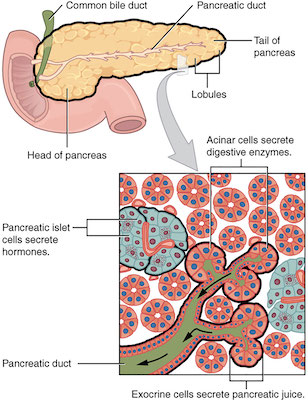A Procedure for Early Diagnosis of Pancreatic Cancer
Posted on 03 Nov 2022
A procedure that combined measurement of glycated hemoglobin (which is a determinant of blood glucose levels and a marker for diabetes) with detection of weight loss was able to diagnose pancreatic cancer up to three years before the appearance of clinical symptoms.
Pancreatic cancer accounts for around 3% of all new cancer cases worldwide, meaning that each year there are over 10,000 new cases in the United Kingdom, over 60,000 in the United States, and nearly half a million worldwide. Unfortunately, the survival statistics are very poor for pancreatic cancer compared to other cancers. Due to delays in detection of the disease, the median survival is only nine months and fewer than 10% of people survive five years or more after diagnosis. More than 80% of people are diagnosed at the advanced, lethal stages when the cancer has spread outside the pancreas to the liver or other organs.

Weight loss and increasing blood glucose levels are early indicators of pancreatic cancer and could lead to a more timely diagnosis, helping to improve survival rates. In this regard, investigators at the University of Surrey (United Kingdom) and the University of Oxford (United Kingdom) identified signs of pancreatic cancer, including weight loss – change in body mass index (BMI), and hyperglycemia and diabetes - levels of glycated haemoglobin (HbA1c) - in an effort to detect the disease at the earliest possible moment.
For this work, 8,777 patients diagnosed with pancreatic cancer between January 1, 2007, and August 31, 2020, were matched to 34,979 controls by age, gender, and diabetes. Changes in BMI and HbA1c were charted over time.
Results revealed that statistically significant changes in weight and glycemic control started three years before pancreatic cancer diagnosis but varied according to the diabetes status. The information from this study could be used to detect pancreatic cancer earlier than is currently achieved.
Senior author Dr. Simon de Lusignan, professor of primary care and clinical informatics at the University of Oxford, said, "Our research suggests that a dramatic and unexplained weight loss, mainly in people with, but also in those without diabetes, as well as an unexplained hyperglycaemia, should be treated with high levels of suspicion. BMI and HbA1c are simple measures routinely collected in clinical practice. However, the challenge for research is the irregular testing of BMI and HbA1c and missing data. For example, we see that BMI and HbA1c were more scarcely recorded for people without a diagnosis of diabetes than for people with diabetes. Data-driven approaches could be important tools that help clinicians identify patients at risk. However, this relies on the quality and completeness of data. Regular HbA1c and BMI measurements in primary care would not only improve diabetes and pancreatic cancer diagnoses but would also improve the quality of routine data for research."
The study was published in the October 5, 2022, online edition of the journal PLOS ONE.
Related Links:
University of Surrey
University of Oxford













